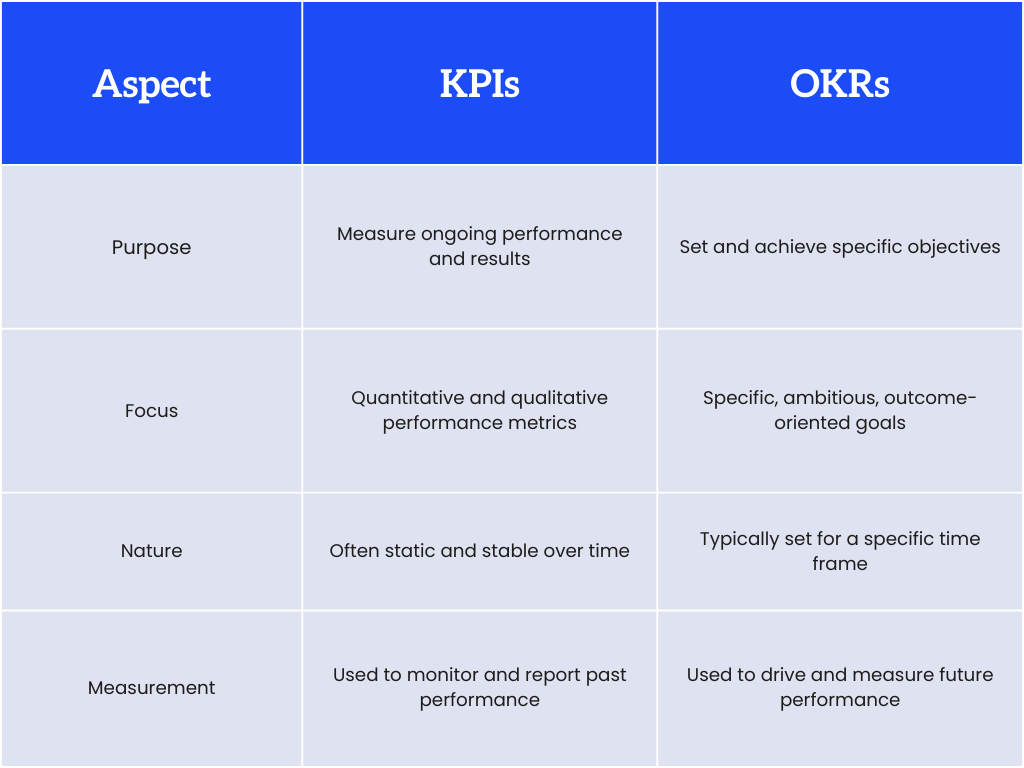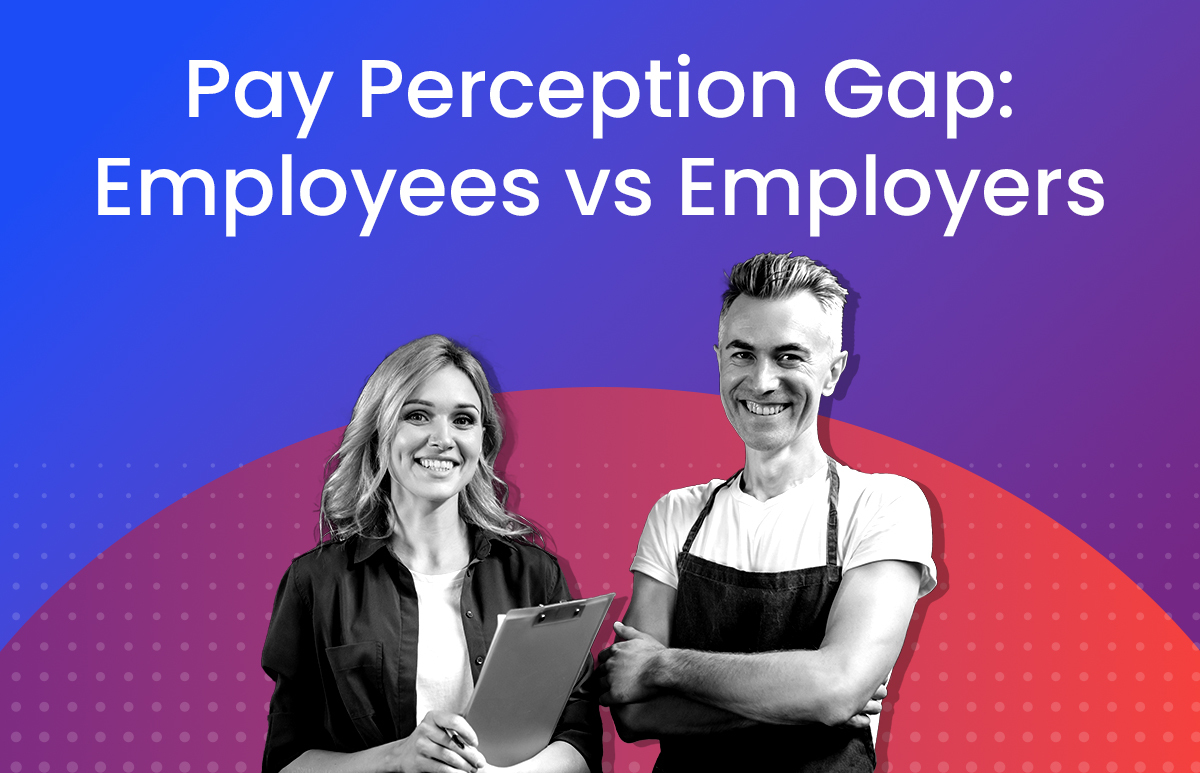KPIs vs. OKRs: What’s the Difference?
HR professionals love a good acronym.

From ATS (applicant tracking system) to EAP (employee assistance program) and FTE (full-time equivalent), why use 3 whole words when 3 punchy letters will do? Performance management has its own trove of acronyms – perhaps the most widely used being KPI, or key performance indicator. However, a newcomer has joined the ranks: OKR, or objectives and key results.
If you’re confused by this new arrival, you are not alone. What do OKRs mean and how do they differ from KPIs?
What is Objectives and Key Results (OKRs)
OKRs form part of a goal-setting framework that helps organisations define their top strategic priorities, breaking down strategy and execution into two components:
Objectives (this is your direction or what you would like to achieve); and
Key Results (in other words, how you will know that you’ve achieved those goals).
Essentially, you set a goal and then define how you will achieve it. OKRs are particularly useful for establishing high-level, yet measurable goals for your business by establishing ambitious outcomes that can be tracked over a set timeframe – typically a quarter. OKRs are a good fit for organisations heavily focused on growth – think Google, Amazon, and yes, ELMO Software. The Key Results are set in quarterly performance reviews and are tracked via regularly scheduled performance check-ins.
What is Key Performance Indicators (KPIs)
If OKRs form the framework, KPIs are measurements that exist within the framework. A KPI is a metric or measurement for monitoring how well individuals, teams or entire companies are performing against their goals. These metrics tend to be quantitative in nature, using simple numbers, ratios or percentages. A net promoter score®^, or NPS, (an indication of how likely customers are to recommend your business) is a prime example of a KPI. These metrics allow you to assess whether the business (or team or individual) is on course to meet its goals, and where improvements or action might be required. KPIs tend to be static, relating to ongoing activities or metrics already in place.
I’m still confused…
Based on those descriptions, you may not see much difference between the two. It’s worth emphasising that this is not an “either/or” situation: you can have both KPIs and OKRs. Indeed, you might want to use KPIs as the basis of your Key Results.
Taken by itself, a KPI (for example, to increase the close rate by 10%) does not specify how you are going to do it. This is where an OKR enters the picture. Not only do you know what you want to improve but also how you are going to make it happen. You clarify success drivers and desired outcomes that support your priorities. Returning to the definition, you do this with:
- Objectives – your ambitious, qualitative and aspirational goals;
- Key Results – quantifiable metrics (ideally 2-5 per Objective) that indicate whether or not you have achieved the Objective.
An analogy might help. Picture your organisation as a car; you’re driving that car towards a destination (your Mission and Vision).
Your KPIs are what you’ll find on your car’s dashboard, such as the fuel gauge and engine temperature gauge. These are things you’ll constantly be checking, for obvious reasons.
OKRs are like your GPS – they’ll guide you to your destination. OKRs are temporary – they’ll change from time to time. Once you’ve passed a landmark towards your destination, you’ll focus on the next one.
Results-driven organisations (and let’s face it, who isn’t results-driven?) need both KPIs and OKRs. If KPIs are used by themselves, you’ll have no idea how you are advancing towards your destination. On the other hand, if you are only using OKRs, you may not notice that you’re running out of gas.
How to implement the OKR framework
If you’ve previously set KPIs for staff but are thinking of switching to the OKR framework, here are some tips.
1. Set objectives
Objectives in the OKR framework are not given as measurable metrics, so they can’t be copied directly from KPIs. Instead, look at your measurable KPIs and group them into captivating goals. They should be aspirational and have a bit of “stretch” built in.
2. Copy Key Results from KPIs
When your Objectives are set, you can attach your old KPIs to them as Key Results. Just ensure you don’t have more than 3 KPIs attached to a single Objective – it’s easy to get overwhelmed if you do more than 3.
3. Ensure your Key Results are worded correctly
The easiest way to set Key Results is to follow the SMART model. That is, make them Specific, Measurable, Achievable, Relevant, and Time-bound. To do this, ask these questions:
- Specific: Is the Key Result well-defined and understandable for everyone?
- Measurable: Can you measure success or failure?
- Achievable: Is it realistic?
- Relevant: Is this Key Result relevant to your Objective?
- Time-bound: Have you clearly established when the goal must be met? For OKRs, the timeframe is usually one quarter.
Ultimately, KPIs and OKRs share more similarities than they do differences. They are both focused on setting goals, promoting transparency, measuring progress and planning for success.
KPIs vs. OKRs

ELMO Software is a cloud-based solution that helps thousands of organisations across Australia, New Zealand and the United Kingdom to effectively manage their people, process and pay. ELMO solutions span the entire employee lifecycle from ‘hire to retire’. They can be used together or stand-alone, and are configurable according to an organisation’s unique processes and workflows. Automate and streamline your operations to reduce costs, increase efficiency and bolster productivity. For further information, contact us.
^Net Promoter, Net Promoter System, Net Promoter Score, NPS and the NPS-related emoticons are registered trademarks of Bain & Company, Inc., Fred Reichheld and Satmetrix Systems, Inc.
 HR Core
HR Core 









